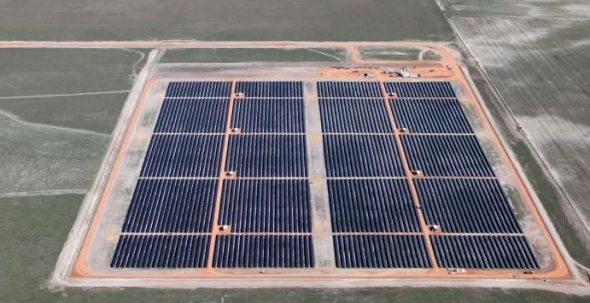The Greenough River solar farm in Western Australia, the first large-scale solar farm in the country, plans to quadruple in size from 10MW to 40MW.
The plans by co-owners Synergy, the government-owned generator and retailer, and US energy giant General Electric, were unveiled in a submission to WA’s Economic Regulation Authority, and reveal that two new 15MW arrays will be built either side of the existing facility, around 50km south-east of Geraldton.
The new arrays, will use First Solar modules, as did the first, but unlike the first installation these will deploy single axis tracking technology to improve the yield. More than 90 per cent of solar farms in Australia are now using tracking technology. SMA is providing the inverters.
Synergy and GE say that the solar farm will seek a power purchase agreement, but presumably that will come from Synergy itself, as it is it the biggest utility in the state and has yet to meet all its renewable energy target commitments.
Greenough River was built in 2012 and remains the only solar farm connected to the main grid in Western Australia, although several other projects have begun, or are about to begin, construction. These include the 30MW Byford solar farm south-east of Perth and a 10MWW solar farm planned near Northam by Carnegie Clean Energy.
Across Australia, however, the large-scale solar boom is accelerating. Eight grid-connected large-scale solar farms have now been completed and another 30 are under construction, or have reached financial closure and are about to begin.
The joint owners of Greenough River says the solar plant, located on a wheat farm, “has been extremely warmly welcomed by what is a very small remote community. No public complaints or opposition have been received.”









